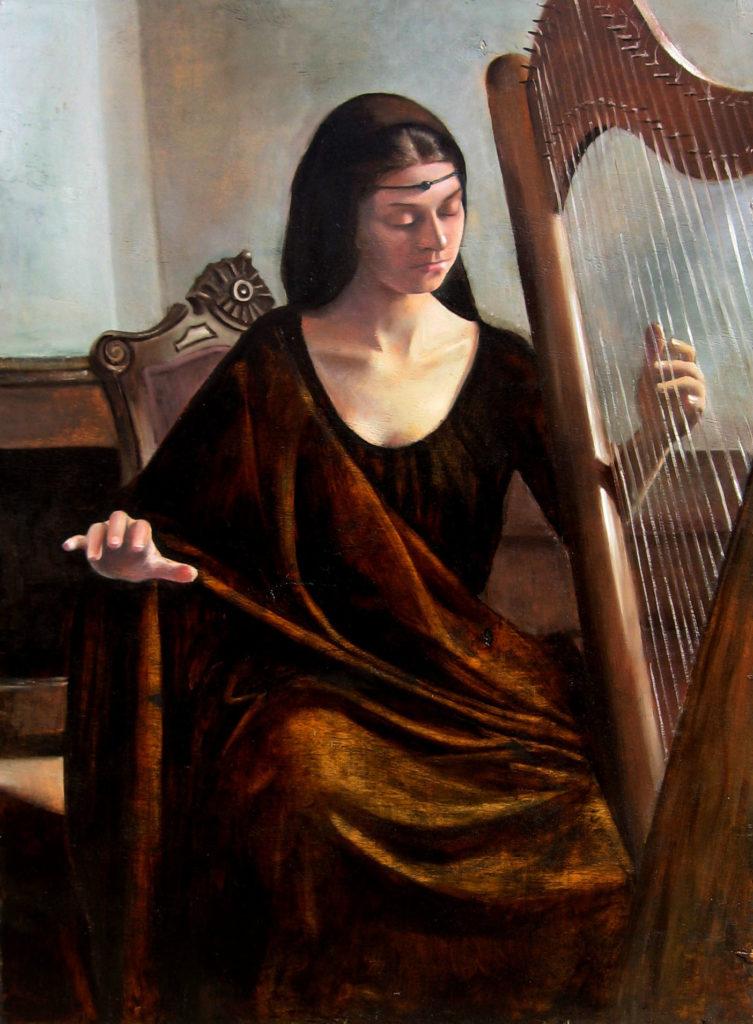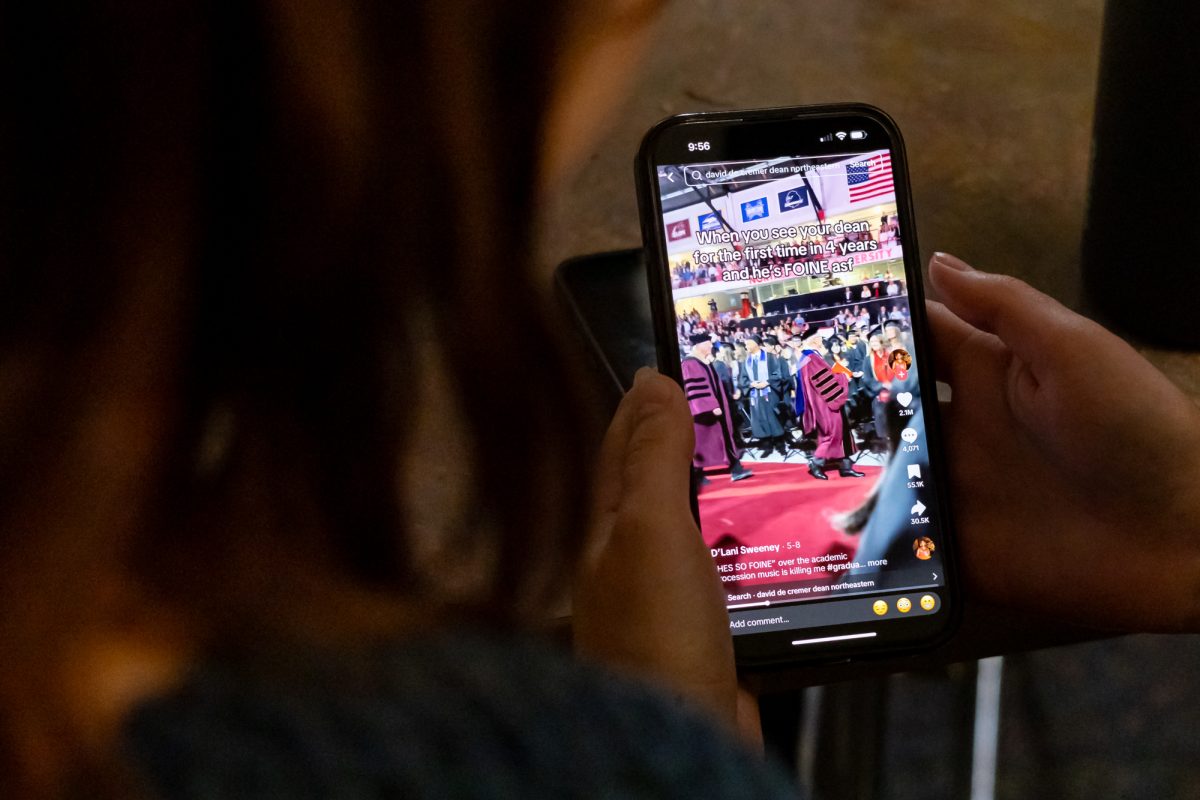By Gwendolyn Schanker, news staff
Rarely does the harmony between siblings extend as productively and creatively as it has for Farzaneh and Bahareh Safarani.
The so-called “Safarani Sisters” are twin graduate students each pursuing a Master of Fine Arts (MFA) degree in Studio Art, a joint program offered through collaboration between Northeastern and the School of the Museum of Fine Arts (SMFA). Although they enrolled in the program separately, the sisters submitted a single portfolio, as they create most of their portraits together.
“Being twins is a very unique situation,” Farzenah said. “It makes us very close to each other [and] it helps us do the work faster.”
The sisters grew up in Iran and were trained under artist Farimah Farhatnia, a Tehran-based painter. The girls first met Farhatnia when they were 16 years old.
“I asked them to draw random lines on a paper and then find a reasonable pattern through those lines,” Farhatnia said in an email to the Hunt News. “Bahareh and Farzaneh made a significant sketching (sic) in silence and with extreme enthusiasm.”
The sisters later attended the University of Tehran to develop their artistic skills. They chose graduate school in theUnited States with the hope of finding “a contemporary art language” for their work, Bahareh said,and by doing so have transitioned to a significantly different culture of artistic education.
“It’s very different from our country,” said Bahareh,explaining that life in the US involves more freedom and less restriction than life in Tehran. During their first semester in Boston, the sisters took classes at both Northeastern and SMFA, hosted several on-campus painting workshops and worked as teaching assistants for Art Professor Mira Cantor’s class.
“I think that having them listening in the classroom has been really great for them,” Cantor, a member of Northeastern’s visual art faculty, said.“As a teacher, I feel like it’s part of my job to help put out an extra effort.”
The sisters have appreciated Cantor’s guidance, saying that she helped them develop both their formal and subjective skills.
“I think her approach to painting and teaching painting to others is the best way,” Farzaneh said.
Cantor has also introduced the sisters to other students who will collaborate with them on their next project, a performance piece centered on Shakespeare’s “Hamlet.”
“His personality reveals a paradox,” said Bahareh of the play’s main character. “With this performance we want people to become more aware of themselves.”
The production is still in the planning stages, but the piece will take place in a black box theater, and will feature about 10 actors and musicians as well as original paintings by the sisters.
“We hope that we can make the same connection we have together with all of the members [of the piece],” Bahareh said.
The performance piece will open before the end of the semester. As far as the rest of their portfolio, many of the twins’ paintings are self-portraits, which mimic the Renaissance style of artists like Leonardo Da Vinci. The sisters chose portraiture because they view it as “one of the most worthy subjects” an artist can pursue, Bahareh said.
The self-portraits the girls create stand out because of their harmonized relationship.
“They paint each other, figuratively,” said Cantor. “The images of their work – they’re really like self-portraits of each other.”
Furthermore, the girls look so alike that it becomes difficult to distinguish them in their portraits.
“I can’t tell who’s who in the painting,” Cantor said.
Although the sisters are able produce quality artwork partly as a result of their similarities, their differences are equally if not more important.
“We are very similar, but we have very tiny differences,” Farzenah said. “Those differences make things very interesting [and] they help us.”
As they continue to progress through the two-year master’s program, the girls are excited to learn more about developing their art in a modern context. This semester they are taking a history of contemporary art at Northeastern, in addition to a critique class at the SMFA.
The sisters are also running workshops on Saturdays that center on creating and critiquing painting in a contemporary context, and will be teaching Sunday workshops for those who want to learn specific aspects of painting, such as landscapes or portraiture.
“The most important thing for us is finding that contemporary language,” Bahareh said of their creative process. “Every single step is interesting.”
Cantor is impressed with the sisters’ progress so far and is looking forward to bearing witness to their future accomplishments.
“I think they have a lot to offer and I think that we can offer them a lot,” she said. “I’m happy with the fact that they’re taking charge of their own master’s degree and taking advantage of the opportunities that open up to them at Northeastern.”
Photo courtesy Farzaneh Safarani









